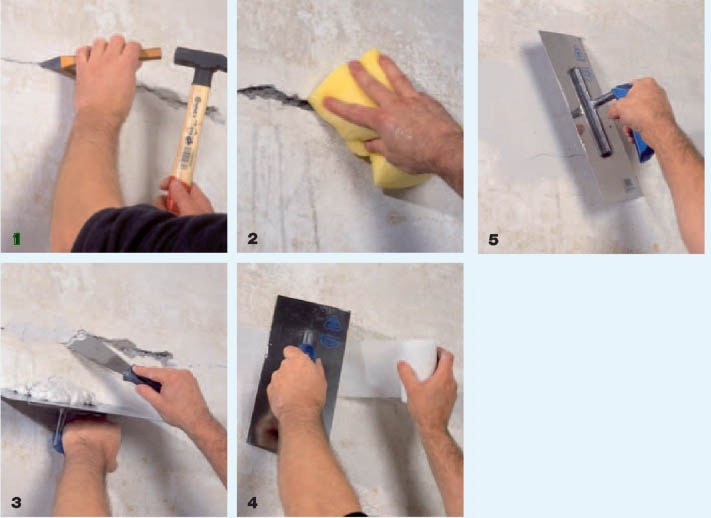 1 You have to get to the bottom of deep cracks before repairing them. To do this, the crack is opened up to the masonry with a hammer and a pointed chisel and widened a little. This creates more adhesive surface for the filler.
1 You have to get to the bottom of deep cracks before repairing them. To do this, the crack is opened up to the masonry with a hammer and a pointed chisel and widened a little. This creates more adhesive surface for the filler.
2 Here, too, the adjacent plaster is very thoroughly wet with a sponge, to prevent the putty from drying out quickly and thus preventing it from becoming detached or cracking.
3 A larger amount of the stiff leveling compound is placed on the smoothing trowel as a working reserve, which is held against the wall just below the prepared crack. Now you can quickly press the compound into the crack with a small trowel or a spatula. It is roughly smoothed and excess material is wiped off from the spatula on the smoothing trowel.
4 Is the crack closed again?, you put a cracked gauze into the still fresh filler and press it evenly with the smoothing trowel with gentle pressure. If necessary, the gauze allows for slight curves.
5 Then you take very little filler on the smoothing trowel and use it to smooth the repaired cracks. The slight elevation of the gauze should be adjusted to the actual wall level.
Who opts for normal building plaster, can processing time (so-called pot life) by adding white glue (Holzleim) lengthen something. About a tablespoon-sized amount is enough on a plaster cup. Specialists mix so-called rabbit glue from the specialist trade in proportion 1:12 with water and then stir in the plaster of paris.
Thanks for this post on repairing cracks in masonry. My uncle did a resin injection to repair the cracks in his basement, which worked out very well. Interesting, that you can extend the processing time by adding white glue.